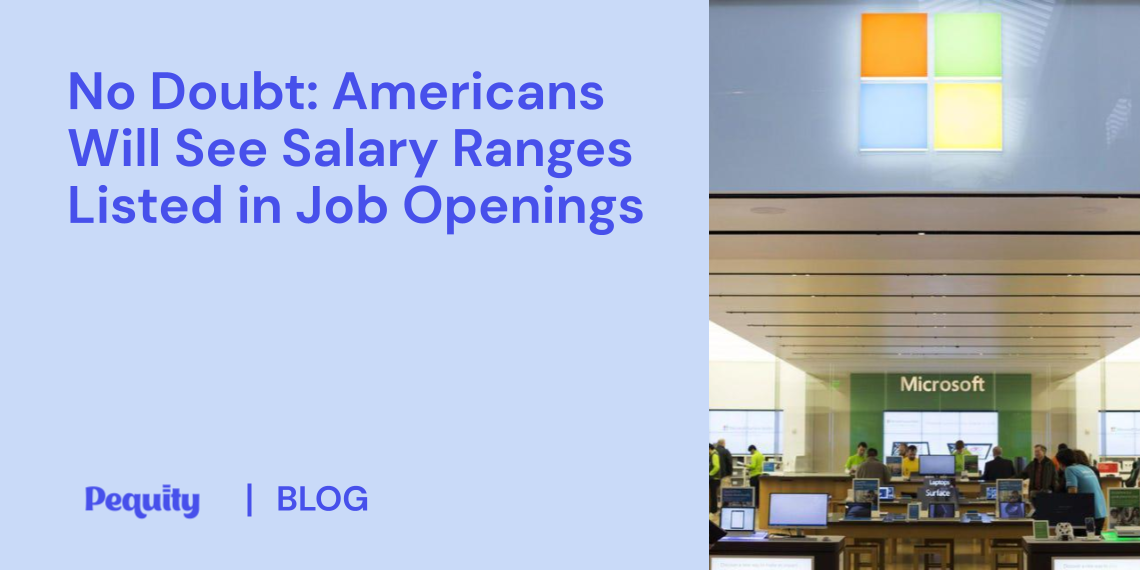“Microsoft is set to become one of the first major US employers to disclose salary ranges for all its job postings in America,” reports the Daily Mail.
Earlier this week, Washington-based Microsoft announced in a blog post their intention to list salary ranges for all open positions in the United States.
This makes them the first major tech company to commit to full transparency, saying they’ll have everything up and running by January 2023—keeping them in perfect compliance with new requirements in their state.
Listing salary ranges seems to be gaining traction, especially among the younger end of the workforce, for whom pay transparency and equity are more important.

Why Is Microsoft Listing Salary Ranges?
The state of Washington is requiring all companies with more than 15 employees in their state to list salary ranges in their job openings.
In 2019, Washington amended its Equal Pay and Opportunities Act (EPOA) to require employers to provide wage and benefit information “on request.” They’ve since concluded that this is a half-measure, and amended the act again to include salary and benefit information at the outset—in the job posting itself.
Microsoft is Washington state’s largest employer. And it’s not even close.
It’s likely they’ve done some pay equity work in the background these past few years, ramping toward a more transparent way of competing in a tight, tech-based job market.
Listing salaries for new employees requires tons of work for current employees as well.
Before listing a range for new employees, HR departments must first ensure that current, and especially tenured employees, are comped to the new, public standard.
By listing salary ranges, Microsoft has set themselves up to comply with new laws and regulations, and have made hiring more friendly to the modern workforce climate.
Are More Companies Going to List Salary Ranges?
In a Forbes article published last week, writer Jenna McGregor called Microsoft “a bellwether among large companies for employment practices.”
She—among many others—can see the clear trend of states like Washington enacting pay transparency laws.
“You’ll see other big companies follow suit soon. It may not be right away—I’d guess Microsoft is a bit further ahead in doing the work of auditing its pay scales and making sure people are paid equally in order to make a bet like this.”
The trend seems clear, among both legislators, and massive corporations: pay transparency is on its way.
It’s likely we’ll see more and more salary ranges listed in job openings on sites like LinkedIn, Indeed, and on company websites.
Certainly, Microsoft has the means to move more quickly on pay transparency as compared to most businesses in the U.S., but taking steps toward pay equity isn’t as big of a chore as HR might think.
There are tools that can expedite a company’s ability to list salary ranges for jobs, and be mindful of pay equity.
Do You Want to List Salary Ranges in your Job Posts?
If you’re looking to abide by new laws, and be ahead of the game when it comes to pay transparency, take a look at Pequity.
Pequity gives HR folks a single platform to list salary ranges, discuss and submit offers, and keep an eye on pay parity.
If you want to automates HR workflows, like offers to promotions & transfers, get a demo of Pequity today.
See exactly how it works, and how you can get ahead of the game like Microsoft.
Contact us to see how Pequity can work for you.
